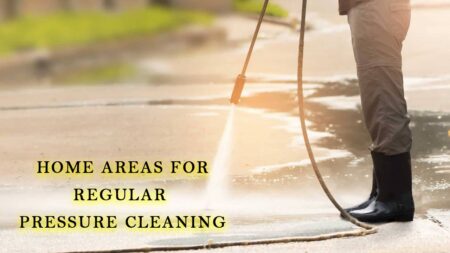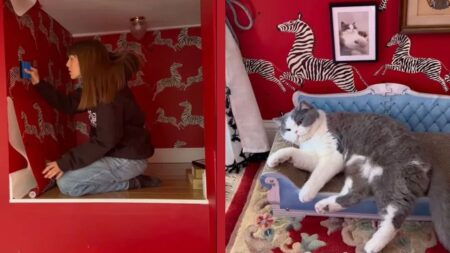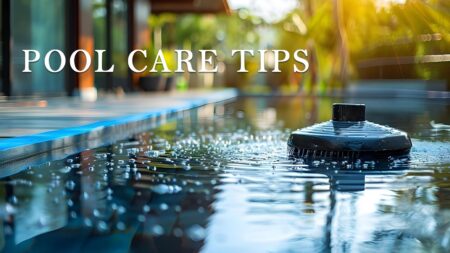Plumbing upgrades are a strategic way to increase the value of your home, enhancing both functionality and aesthetic appeal. Beyond the practical benefits, these upgrades can also transform the overall look and feel of key areas like the kitchen and bathroom. In case you are looking to sell your property then it is a point to note that buyers often prioritize homes with updated plumbing systems and contemporary amenities because they offer long-term reliability and reduced maintenance costs.
Ultimately, investing in plumbing upgrades can provide a strong return on investment, making your home more desirable and marketable. Even if you are not looking to sell right away, upgrades can save money, reduce water usage, and even prevent costly repairs in the future.
Most Common Plumbing Upgrades to Consider
What are the most effective plumbing upgrades that can boost your home’s value? Let’s explore several key improvements that make a difference.
Replace Old Pipes With Modern Materials
First and foremost, replacing outdated pipes is a significant plumbing upgrade that homeowners should consider. Homes built before the 1980s often have galvanized steel or polybutylene pipes, both of which are prone to corrosion and leaks. Over time, these materials can lead to severe water damage, which can be costly to repair. By upgrading to modern materials like copper or PEX piping, you enhance the safety and reliability of your home’s plumbing system.
For example, copper pipes are well-known for their durability and long lifespan. On the other hand, PEX piping is more flexible and easier to install, which makes it a popular choice in newer homes. All this work needs expert hands with decades of experience, as seasoned professionals can ensure the job is done right.
Install a Tankless Water Heater
Unlike most traditional water heaters, tankless models heat water only when needed. This on-demand heating method ensures energy is used efficiently, helping homeowners lower their utility bills. Moreover, tankless water heaters take up less space and last longer than conventional models. Because of their energy efficiency and cost savings, they are highly appealing to buyers. As a result, installing tankless water heaters is a great way to enhance your living comfort and home’s value.
Water-Efficient Fixtures
If you like the idea of using water justly and reducing any wastage then installing water-efficient fixtures is an easy yet effective way to do so. Low-flow toilets, faucets, and showerheads help conserve water without compromising performance. For example, a low-flow toilet uses much less water per flush, reducing water bills and making your home more eco-friendly. Additionally, installing these fixtures is relatively cheap when compared to other plumbing upgrades, yet they make a noticeable difference in a home’s overall efficiency.
Upgrade to a Smart Plumbing System
Smart home systems have become increasingly popular and plumbing is no exception. Smart plumbing systems, such as water leak detectors and automatic shut-off valves, provide extra security by detecting leaks early and alerting homeowners. This can prevent water wastage and save on costly repairs. By installing smart plumbing systems, you choose technology that is created for maximum water efficiency.
Add a Whole-House Water Filtration System
Another valuable upgrade is a whole-house water filtration system, which ensures that clean, filtered water runs through every tap in the home. Many buyers place high importance on water quality, and having a system that removes impurities like chlorine, lead, and other contaminants can help residents live a healthy life. Not only does this system improve water quality for drinking and cooking, but it also protects plumbing fixtures from mineral buildup. This type of upgrade offers both health benefits and long-term protection for the plumbing system, making it a worthy feature.
Bathroom and Kitchen Plumbing Remodels
When it comes to increasing home value, the kitchen and bathrooms are two of the most important areas to focus on. Remodeling the plumbing in these spaces can have a positive impact on both functionality and aesthetics. Upgrading faucets, sinks, and showers with modern fixtures can give these areas of your home a fresh, updated look. These upgrades not only improve daily living but also add significant value, as they transform two of the most frequently used areas of the home.
Outdoor Plumbing Enhancements
In addition to indoor plumbing upgrades, outdoor plumbing should not be overlooked. Enhancing your outdoor space with plumbing features like an outdoor kitchen sink or a garden hose bib can add functionality to your yard, making it more appealing for daily use. Homeowners can benefit from installing an outdoor shower near a pool or a new sprinkler system that helps keep the garden in good condition. These upgrades are particularly attractive to homebuyers who enjoy outdoor living, as they increase the versatility, usability, and value of the property.

Commonly Used Tools for Plumbing
When it comes to plumbing, having the right tools is essential for tackling common repairs and maintenance tasks. Here are some of the most commonly used tools for plumbing:
Pipe Wrench: A pipe wrench is a heavy-duty tool designed for gripping and turning pipes. It’s essential for loosening or tightening pipes and other plumbing fixtures.
Adjustable Wrench: An adjustable wrench, also known as a crescent wrench, is used to tighten or loosen nuts and bolts. It’s especially useful for plumbing connections like faucets and valves where a pipe wrench may be too large.
Plunger: One of the most basic yet important tools, a plunger is used to clear blockages in toilets, sinks, and drains. The two common types are the cup plunger (for sinks) and the flange plunger (for toilets).
Plumber’s Tape: Teflon tape is essential for sealing threaded pipe connections, and preventing leaks by creating a tight, waterproof seal. It’s commonly used on joints and fittings in plumbing projects.
Basin Wrench: A basin wrench is designed for working in tight spaces, particularly when installing or removing faucets. Its long handle and pivoting head make it ideal for reaching behind sinks.
Pipe Cutter: Pipe cutters are used to cleanly cut through copper, PVC, or plastic pipes. They are available in manual (rotary-style) or automatic versions and provide precise cuts for efficient plumbing work.
Tongue-and-Groove Pliers: These adjustable pliers are great for gripping, tightening, and loosening pipes, nuts, and bolts. Their adjustable design allows them to handle various pipe sizes, making them versatile for multiple tasks.
Hacksaw: A hacksaw is used for cutting metal and plastic pipes, bolts, and other hardware. Having sharp blades and a sturdy frame is important for making clean cuts during plumbing projects.
Plumber’s Snake: A plumber’s snake is a tool designed to clear clogs in drains that a plunger cannot fix. It’s inserted into the drain and turned to break up or remove blockages.
Hand Auger: Similar to a plumber’s snake but specifically designed for toilet clogs, a hand auger is used to remove stubborn blockages deeper in the pipes.
Faucet Packing and Washers: These small components are essential for repairing leaky faucets. Having a selection of various sizes on hand can help you quickly fix or replace worn-out washers and packing.
Plumbing Torch: A torch is used when soldering copper pipes, an essential skill for sealing joints. It’s used with solder and flux to create leak-proof connections.
Tape Measure: Accurate measurements are crucial for cutting pipes and installing fixtures. A tape measure ensures you cut and fit materials precisely.
Plumbing Putty and Sealants: Plumber’s putty is used to create watertight seals around fixtures like faucets and drains. It’s especially helpful when installing new fixtures. Silicone sealant is another common tool for sealing joints and preventing leaks.
Bucket and Towels: Buckets and towels are simple yet essential for catching and cleaning up water during plumbing repairs. They’re useful when draining pipes or dealing with leaks.
These tools form the backbone of any DIY plumber’s toolkit, helping to perform routine maintenance, fix leaks, unclog drains, and install new fixtures efficiently. However, if you have no idea how to do it yourself, you should leave the upgrade job or maintenance to professionals who are skilled at it.
Also Read: Essential Faucet Repair Tips Every Homeowner Should Know
Home Plumbing Essential Tips for Maintaining the Plumbing System
Proper maintenance of your home’s plumbing system is essential for avoiding costly repairs and ensuring everything runs smoothly. From preventing clogs to detecting leaks a little knowledge and proactive care can save you time and money. Here are some essential home plumbing tips to keep your system in top shape.
Prevent Clogs Before They Happen
A clogged drain is a common plumbing issue, but it is also one of the easiest to prevent. Avoid flushing anything other than toilet paper down the toilet, and keep food scraps, grease, and hair out of your sinks and drains. Installing drain guards in showers and sinks can help catch debris before it goes down the pipes.
Know the Location of Your Shut-Off Valves
In the event of a plumbing emergency, knowing where your main water shut-off valve is located can save you from water wastage or any possible damage to the property. It’s usually found near the perimeter of the house or in the basement. Make sure all household members know where it is and how to use it. Additionally, locate individual shut-off valves for sinks, toilets, and appliances like dishwashers.
Use Your Garbage Disposal Properly
Garbage disposals are convenient, but they can also be a source of clogs if not used correctly. Avoid putting fibrous vegetables, grease, bones, or coffee grounds down the disposal. Always run cold water when using it, and consider adding ice cubes occasionally to help clean the blades and remove any buildup.
Install Mesh Drain Covers
Installing mesh covers over drains in the bathroom and kitchen is an easy and effective way to prevent hair, soap scum, and food particles from entering and clogging the pipes. These covers are affordable, easy to install, and can be cleaned or replaced regularly.
Be Careful with Chemical Drain Cleaners
While chemical drain cleaners may provide a quick fix, they can cause long-term damage to your pipes. Instead, opt for natural solutions like a mixture of baking soda and vinegar, followed by boiling water, to clear minor clogs. For more stubborn blockages, use a plunger or a drain snake.
Keep an Eye on Your Water Pressure
Consistently low water pressure can indicate underlying plumbing issues, such as a hidden leak or a problem with the water supply. Installing a pressure gauge or consulting a plumber can help you determine if your water pressure is within the recommended range of 40-60 psi. If it’s too high, a pressure regulator might be needed to protect your pipes.
Winterize Your Pipes
In colder climates, frozen pipes are a major concern. Insulate pipes in unheated areas like basements, attics, or crawl spaces to prevent them from freezing. Let faucets drip during extreme cold to relieve pressure in the pipes and prevent them from bursting. Disconnect and drain outdoor hoses and shut off exterior water sources before the first frost.
Check for Leaks Regularly
Even small leaks can waste significant amount of water and lead to larger problems if left unattended. Regularly inspect under sinks, around toilets, and near appliances like washing machines for any signs of leaks. If you notice water stains, puddles, or damp areas, investigate immediately to prevent further damage.
Flush Your Water Heater Annually
Sediment buildup in your water heater can cause noises, reduce efficiency, and shorten its lifespan. Flushing your water heater annually helps remove this sediment, improving its performance and extending its service life. If you’re unsure how to do this, consult the manufacturer’s guide or hire a professional plumber.
Upgrade Old Fixtures and Appliances
Leaky faucets, outdated water heaters, and inefficient toilets can waste water and increase utility bills. Consider upgrading to modern, water-efficient fixtures like low-flow showerheads and dual-flush toilets. Replacing old water heaters with energy-efficient models can also help save money in the long run.
Know When to Call a Professional
While many minor plumbing issues can be handled by homeowners, some problems require professional expertise. If you experience persistent clogs, leaking pipes, or any other significant plumbing issues, it’s best to consult a licensed plumber. Attempting DIY fixes without proper knowledge can lead to more extensive and expensive repairs.
Plumbing upgrades not only improve your home’s efficiency but also boost its value. Replacing old pipes, installing tankless water heaters, and adding smart plumbing systems offer practical benefits that appeal to buyers. Water-efficient fixtures and outdoor enhancements further increase comfort and marketability. By investing in these upgrades, homeowners can enjoy a more functional home while enhancing its long-term value.
FAQs About Home Plumbing
Here are some frequently asked questions (FAQs) about home plumbing:
Q. How can I prevent my pipes from freezing in winter?
A. Insulate pipes, especially those in unheated areas like basements or attics. Let faucets drip during extreme cold, and keep cabinet doors open to allow warm air circulation around pipes.
Q. Why is my water pressure low?
A. Low water pressure could be due to clogged pipes, a malfunctioning pressure regulator, a partially closed shut-off valve, or even issues with the municipal water supply.
Q. What should I do if my toilet keeps running?
A. Check the flapper valve inside the tank. It may need adjusting or replacing. Make sure the chain isn’t too short or tangled, preventing the valve from sealing properly.
Q. How do I unclog a drain naturally?
A. A mix of baking soda and vinegar can help break down clogs. Pour boiling water down the drain, add the mixture, and follow it with more boiling water.
Q. Why is my faucet dripping?
A. Dripping faucets usually occur due to worn-out washers, O-rings, or a damaged valve seat. These parts can be replaced to stop the leak.
Q. How can I tell if I have a water leak in my home?
A. Look for signs such as unexplained high water bills, damp spots on walls, floors, or ceilings, and mold or mildew. Checking the water meter can also help detect leaks when water isn’t in use.
Q. What’s the difference between hard and soft water?
A. Hard water contains high levels of minerals like calcium and magnesium, which can lead to scaling in pipes and appliances. Soft water is free of these minerals, making it gentler on plumbing systems and better for soap lathering.
Q. Can I use chemical drain cleaners for clogs?
A. While effective, chemical drain cleaners can damage pipes over time and should be used sparingly. Mechanical methods like a plunger or drain snake are often safer alternatives.
Q. Why does my water heater make noise?
A. A noisy water heater could indicate sediment buildup at the bottom of the tank. Flushing the tank can help reduce these sounds and improve efficiency.
Q. How often should I check my plumbing system?
A. Regularly inspect your plumbing system every six months to a year, checking for leaks, corrosion, and any signs of wear or damage to prevent costly repairs.
Follow Homecrux on Google News!




